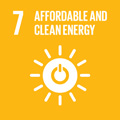- Docente: Andrea Giorgetti
- Credits: 6
- SSD: ING-INF/03
- Language: Italian
- Teaching Mode: Traditional lectures
- Campus: Cesena
- Corso: Second cycle degree programme (LM) in Electronics and Telecommunications Engineering for Energy (cod. 8770)
-
from Sep 20, 2024 to Dec 17, 2024
Learning outcomes
At the end of the course, students will have the skills to analyze and design digital signal processing algorithms for energy-efficient communications systems. In particular, students will be able to: analyze digital systems in time-domain, frequency-domain, Z-domain; design digital filters; design multi-rate digital signal processing systems; design adaptive filters. Finally, the student will know the methodologies for analyzing and designing efficient signal processing blocks taking into account the required energy resources.
Course contents
- Discrete-time signals, spectral representation, convolution, and correlation operators.
- Discrete-time linear systems, numerical filters, and filtering.
- Sampling, quantization, and reconstruction.
- Multi-rate systems, decimation, interpolation.
- Discrete Fourier transform (DFT), fast Fourier transform (FFT), Z transform, discrete cosine transform (DCT).
- Circular convolution and block filtering through FFT.
- Design of FIR and IIR filters.
- Spectral analysis.
- Linear prediction, estimation, optimal filtering, and adaptive filtering.
- Filter banks.
- Image and video compression (JPEG and MPEG standard), digital audio processing.
Readings/Bibliography
- A. V. Oppenheim, R. W. Schafer, Elaborazione Numerica dei Segnali, Franco Angeli, 1996.
- J. G. Proakis, C.M.Rader, F. Ling, C. L. Nikias, et alii, Algorithms for Statistical Signal Processing, Prentice Hall, Upper Saddle River, NJ, 2002.
- M. Bellanger, Digital Processing of Signals, Third Ed. John Wiley & Sons, 2000.
- R. C. Gonzalez, R. E. Woods, Digital Image Processing, Second edition, Prentice Hall, NJ, 2002.
Teaching methods
The course includes classroom lectures and in-depth seminars. During the lectures, selected digital signal processing algorithms are implemented using the Matlab platform and made available to the students. Examples include audio source localization, auralization, and channel equalization.
Assessment methods
Student learning is assessed through a final written exam lasting 2 hours, during which the use of books, notes, or electronic devices is not permitted, followed by an oral examination.
The written exam is designed to evaluate the students’ ability to solve problems related to the topics covered in the course. It is graded with a pass/fail judgment, and a passing grade is required to be admitted to the oral examination. The written exam is valid only for the exam sessions within the same examination period. The oral examination aims to verify the acquisition of the knowledge outlined in the course syllabus.
Both the written and oral exams also aim to assess the understanding of general methods for digital signal processing and the ability to design signal processing subsystems. The final grade, expressed on a scale of thirty, reflects the evaluations from both examinations.
Teaching tools
Lectures and exercises are carried out with the help of a personal computer and the Matlab platform freely available to students. There are also tutorials on audio and video coding techniques (JPEG, MPEG, and MP3) and processing sensors' data.
Office hours
See the website of Andrea Giorgetti
SDGs


This teaching activity contributes to the achievement of the Sustainable Development Goals of the UN 2030 Agenda.
